Substituir os alto-falantes dianteiros de fábrica pelo aftermarket é o primeiro passo para melhorar o áudio do carro no Jeep Wrangler JK. Mas como trocar os alto-falantes frontais no Jeep Wrangler JK e quais são os melhores? Vamos descobrir.
Substituir os alto-falantes frontais, embora demorado, não é difícil. Siga as etapas abaixo e simplifique todo o processo. - Remova os painéis laterais usando uma ferramenta de remoção de painel ou uma chave de fenda.
- Remova a proteção do joelho do lado do motorista.
- Remova os parafusos de 10 mm da tampa metálica do volante.
- Remova dois parafusos de 7 mm de baixo do painel do volante. Early Wrangler JK tinha quatro parafusos neste lugar.
- Remova o porta-luvas empurrando as abas internas para dentro até que os dois pinos plásticos se soltem do painel.
- Desaperte os parafusos sob o porta-luvas. Dependendo do modelo, há dois ou quatro parafusos embaixo.
- Remova dois parafusos de 7 mm de baixo do porta-luvas, os modelos JK mais antigos têm quatro parafusos nesta área.
- Remova dois parafusos de 7 mm de cada lado do painel que prendem os gabinetes dos alto-falantes.
- Remova um parafuso de 10 mm de baixo de cada gabinete.
- Desconecte os fios de cada caixa de alto-falante.
- Remova os compartimentos soltos de trás do painel.
- Remova os alto-falantes dos gabinetes e substitua-os por novos.
Essas etapas tornarão o processo de substituição do alto-falante rápido e fácil. Se o seu Jeep estiver equipado com tweeters separados, substituí-los é simples, pois você pode acessá-los na parte superior do painel.
Dependendo do ano do Wrangler JK, você terá um dos tweeters se destacando nos dois cantos do painel e depois de 2015 liberado dentro do painel.
No artigo abaixo, analisaremos os melhores alto-falantes que você pode encontrar para um traço JK e detalharemos o processo de substituição.
Como substituir os alto-falantes de fábrica no Wrangler JK?
Os alto-falantes no Wrangler não são colocados nas portas padrão, como em 99% dos outros carros. Em vez disso, você os encontrará nos assentos voltados para o painel, o que significa que o efeito estéreo também é diferente.
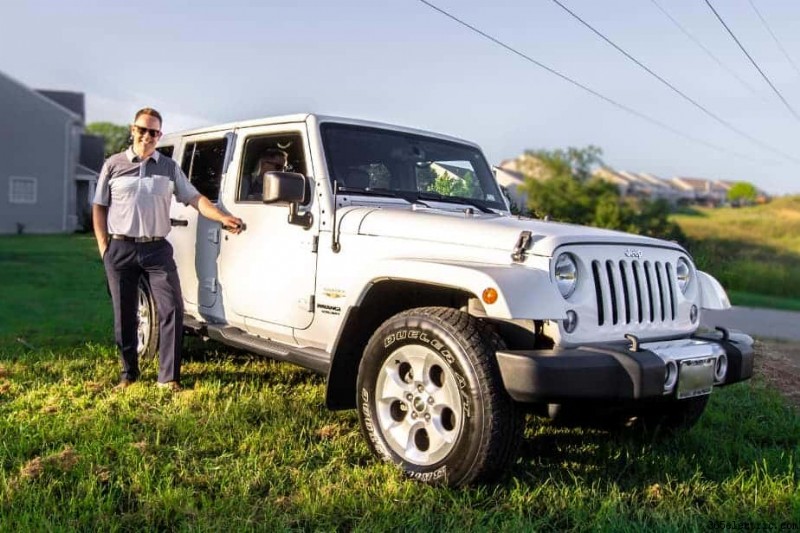
Os alto-falantes frontais em nosso Jeep JK não são tão fáceis de substituir quanto no antigo Wrangler TJ, mas não é difícil. É apenas mais demorado.
Alguém pode perguntar se vale a pena substituir os alto-falantes de fábrica no Wrangler. Depois de ouvir o sistema de áudio padrão, você entenderá que vale a pena cada hora gasta para substituí-los.
Há pouco tempo, substituímos os alto-falantes frontais no Wrangler JK de um amigo no sábado, e foi muito divertido com churrasco.
Se você não tem experiência, é mais fácil começar pelo lado do passageiro, onde você terá um pouco mais de acesso ao painel. Quando você já sabe o que fazer quando o lado do passageiro estiver concluído, o alto-falante do lado do motorista será muito mais rápido.
Substituindo os alto-falantes frontais Wrangler JK.
Embora você não precise de nenhuma ferramenta avançada, algumas ferramentas manuais simples ajudarão a substituir os alto-falantes do painel frontal no Wrangler JK:
- Ferramenta de painel
- Chave de soquete com extensão
- Soquetes de 7 mm e 10 mm
- Driver Torx T-20
Para acessar os parafusos que prendem os gabinetes, você deve remover os painéis laterais em ambos os lados do painel e remover o porta-luvas. Ao retirar o porta-luvas, aperte as laterais e retire o porta-luvas com cuidado.
No lado do motorista, remova o apoio de joelho sob o volante. Agora você tem acesso a todos os parafusos que prendem os gabinetes. Remova-os usando chaves de soquete de 7 mm e 10 mm da parte inferior e lateral do painel. No total, você terá, dependendo do ano de produção do seu Jeep, quatro ou seis parafusos.
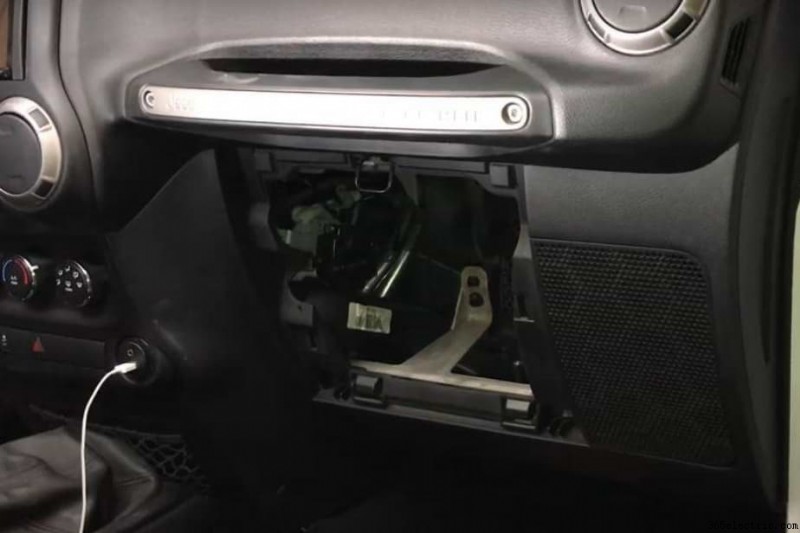
A remoção do gabinete do lado do motorista pode ser demorada. Você precisará girar a caixa para baixo para tirá-la.
Depois que a caixa do alto-falante estiver fora, desaparafuse os parafusos e remova o alto-falante do gabinete. Quando o alto-falante estiver desligado, desconecte a fiação e agora é a hora de conectar qualquer adaptador de fio que possa ser diferente dos alto-falantes de fábrica.
Além disso, neste momento, vale a pena conferir e, se necessário, substituir o enchimento do alto-falante de poliéster. Não instale um novo alto-falante na caixa plástica vazia; isso destruirá o som, especialmente quando você instalar alto-falantes potentes com graves médios fortes.
Substituindo os tweeters de traço
Quando você terminar com os woofers no painel, trabalhar com tweeters será muito divertido.
Primeiro, pegue a ferramenta de remoção do painel e retire as tampas.
Desparafuse os tweeters do painel e desconecte os fios do alto-falante. Você pode precisar adicionar adaptadores de fio dependendo do tipo dos novos tweeters que você instalará, mas isso será apenas alguns centímetros do fio extra no painel.
Coloque os novos tweeters nos adaptadores originais e conecte os fios. Dependendo do tamanho dos alto-falantes que você possui, pode ser necessário comprar adaptadores que caibam em tweeters maiores, e você pode encontrá-los online, por exemplo, em Crutchfield.
Quando você tiver tweeters colocados em adaptadores, aparafuse-os de volta ao painel e cubra com as grades originais removidas anteriormente.
Ao instalar um novo sistema de alto-falantes, você terá que colocar crossovers e passar novos fios aos alto-falantes. Colocamos crossovers no Jeep do meu amigo em ambos os lados do painel, logo abaixo das tampas do painel removidas.
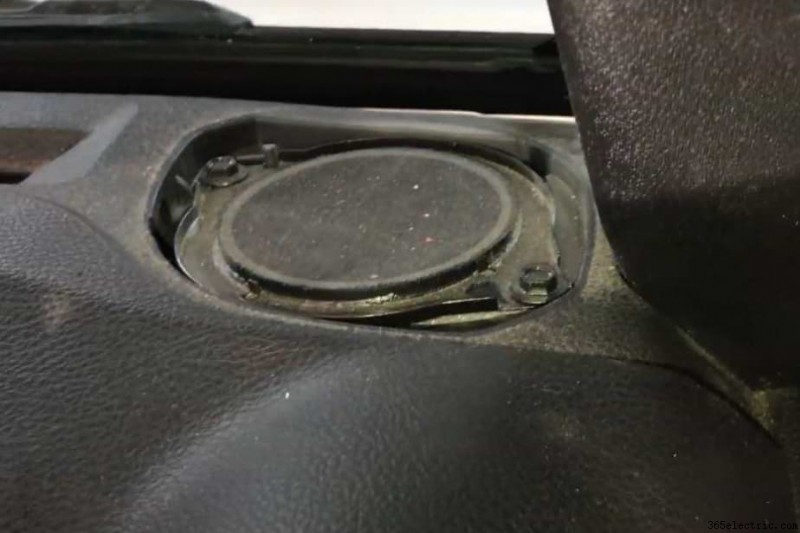
Substituindo os tweeters de fábrica por alto-falantes coaxiais de 3,5" de 2 vias
Nos Wranglers JK produzidos a partir de 2015, você tem espaço no painel para tweeters de 3,5″ nivelados, que é o tamanho das placas adaptadoras. No entanto, em vez de tweeters, você pode instalar pequenos alto-falantes coaxiais de 3,5″ de 2 vias.
Dessa forma, você pode ter quatro canais tocando na sua frente, dois de 6,5″ na altura do joelho e outros 3,5″ na parte superior do painel voltado para o teto.
Ter quatro alto-falantes independentes na frente do carro é uma excelente solução, especialmente quando você tem um amplificador de seis canais. Você pode usar quatro canais para alimentar os alto-falantes à sua frente e os outros dois canais para a barra de som Jeep acima de sua cabeça.
Tal sistema funcionará lindamente, e ter quatro alto-falantes frontais de alta qualidade é algo para se orgulhar.
Quais são os melhores alto-falantes para o Jeep Wrangler JK?
Quando conhecemos todos os parâmetros que devemos buscar, podemos iniciar uma pesquisa real para nossos alto-falantes Wrangler.
O mais popular e frequentemente instalado é o sistema de componentes Alpine SPV-65X-WRA com tweeters de domo de 1 polegada, mas esta não é a única opção.
Another popular in Jeep 2-way system is Kicker 47KSS6704 or water-resistant Polk Audio MM652. All these systems are top class, but each of them will make a little different sound.
Kicker 47KSS6704
If I were about to replace my front speakers in JK now, I would buy Kicker 47KSS6704 even today, and here is why. The Kicker is known for quality, powerful speakers, and KS series is no different, but it is not the power I was looking for, it is quality of music I had a pleasure listening to.
KSS6704 is a 6 3/4″ component system that is larger than typical 6.5″, It contains two powerful polypropylene woofers and even stronger 1″ silk dome tweeters.
Such a combination makes a fantastic audio effect, taking into consideration that front dash speakers in Jeep JK face down the front chairs. All sounds are natural, and starts unusually low, at 35Hz. 35Hz for standard car speakers is an excellent achievement, usually played by subwoofers.
Tweeters, on the other hand, although do not go extremally high in the frequency, can have adjusted loudness at the crossover up to 9dB per octave. This is also a fantastic result, these small sensitive silk dome tweeters after adjustment can be three times louder, and you hear this difference.
My overall experience from Kicker KSS6704 is hugely positive. I loved especially vocal and instrumental quality with all depth and surrounding effects. They are available on Amazon, so if you would like to give them a try, click this link and check the latest price.
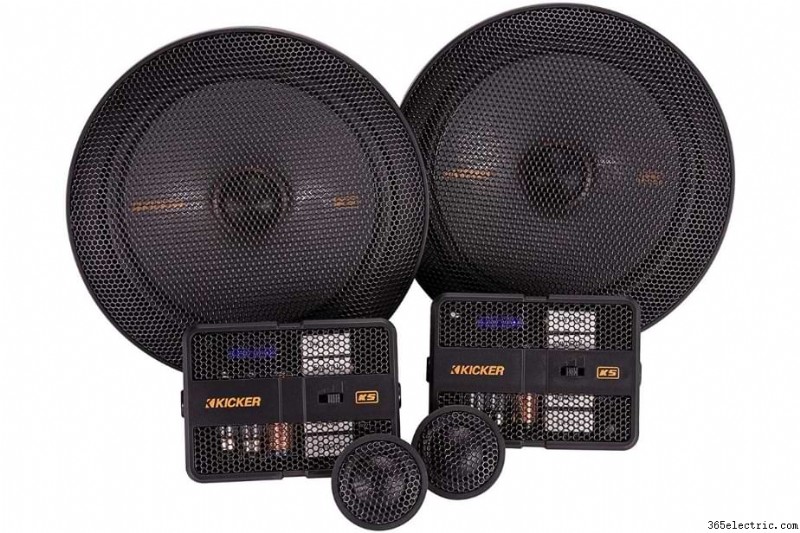
One point to add to this fantastic system.
To experience KSS6704 dynamic at full, you have to have a good amplifier, and I would not recommend anything from the bottom shelf. An amplifier made in A/B class, with 150W RMS per channel would be ideal. These speakers can be, of course, powered from the head unit, but why?? The sound will be flat, and to be honest, even if other speakers would match the factory radio better, Kicker KSS6704 will not.
Another thing is that because the front speaker enclosure in Jeep JK is plastic, make sure they are filled with polyester stuffing before installing the speakers.
- 6-3/4″ woofer with polypropylene cone and rubber surround
- 1″ silk dome tweeter
- crossovers with three levels of tweeters adjustments, up to +9dB
- Power RMS 125W (peak 250W)
- Frequency Range – 35-21,000 Hz
- Sensitivity – 91 dB
- Impedance – 4 Ohm
Alpine SPV-65X-WRA
If you find Kicker too powerful or too expensive, you may need to check out
Alpine SPV-65X-WRA that produce smooth and precise tones, but not as dynamic as Kicker. You can find them on Amazon, so if you already convinced by Alpine’s great reputation, click this link and check the recent price.
Alpine makes speakers that are part of the Jeep Premium Audio System, so I decided to try them, and find out how good they really are.
Alpine SPV-65X-WRA are standard 6.5″ size, waterproof component speakers, that can be installed as independent, or typical coaxial speakers thanks to the included special bracket.
As I expected, bass in Alpine is softer and low tones do not go as low as in the Kicker. However, I was surprised by the highs produced by 1″ Teteron dome tweeters. The frequencies are very wide, which makes produced mid and high sounds clear and precise.
When looking at these speakers from the side, they look like a smaller brother of my favorite Kickers. Especially when looking at the much smaller magnet, you can tell these speakers will not make strong kicks. Nevertheless, they are worth buying, especially if your favorite tones are in Classical, Jazz, Soul, or any unplugged soft sounds.
- Power RMS 75W (225W peak)
- Frequency Response – 65-22,000 Hz
- Impedance – 4 Ohm
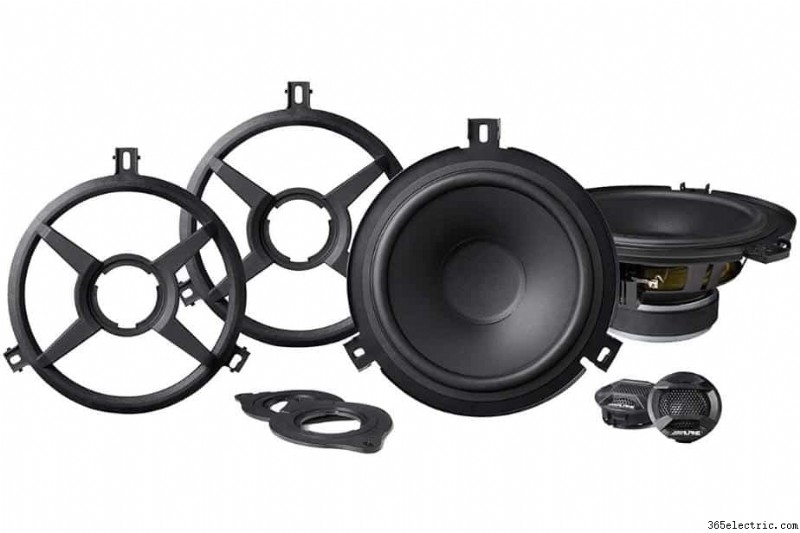
Polk Audio MM 652
If you are driving your Jeep JK with no roof or through the rivers, you should look for a powerful system with high speakers’ sensitivity, but also waterproof.
When talking waterproof speakers, first coming in my mind is the Polk Audio with its fantastic MM series, from which MM652 has the best fit to the Wrangler JK. If you fancy off-road trips or crossing rivers make sure your speakers can handle these harsh conditions. MM652 are available on Amazon, so if you want to give them a try click this link and check the current price.
These heavyweights 6.5″ speakers have been designed as marine speakers, which means you will not be disappointed with the sound quality in the free air. I was listening to them only in the studio, and the music was so precise and without the smallest distortion.
Thanks to the sensitivity 93 dB, they can play loud in the car with a soft-top or with the roof down. MM652s, although the head unit can power them, show their best when wired to the quality amplifier. The cones made of polymer with titanium coating are ready for real power and can make strong bass starting as low as 40Hz, and this is excellent value for coaxial speakers.
The best effect comes from tweeters that can go up to 40kHz and play outstanding quality high tones. Listening to the violin, guitar, or vocal is something you will not hear from many other speakers.
• Titanium coated polymer woofer cone with Santoprene rubber surround
- 1″ Terylene fabric tweeter
- Basket made from reinforced fiberglass
- Power RMS – 100W (300W peak)
- Frequency Response – 40-40,000 Hz
- Sensitivity – 93 dB
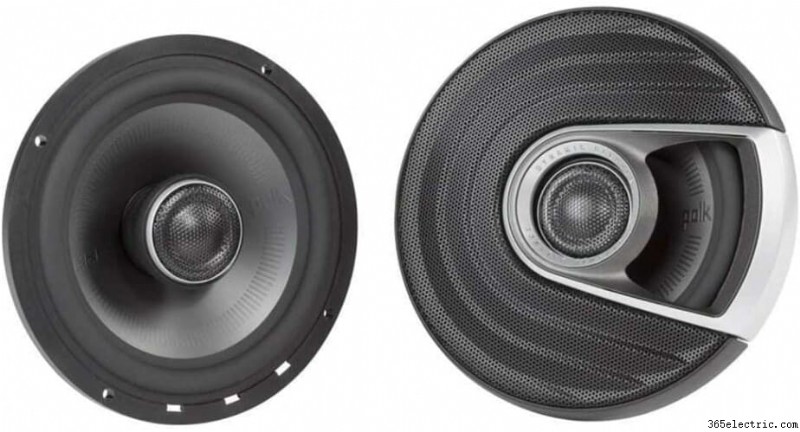
How to choose dash speakers for Jeep Wrangler JK?
As a standard, Wrangler JK has eight speakers (4 in-dash and 4 in soundbar), and if you are lucky to have a premium system, it will have an additional subwoofer in the back. Either of these systems is better than smaller speakers in previous Jeep TJ, but if you value music quality, you will have to replace even the bigger ones.
When searching for speakers that will fulfill our needs, we have several installation options.
- Install a complete component system and replace both factory woofers and tweeters.
- Install coaxial speakers in the dash and add separate tweeters.
- Install coaxial speakers and leave original factory tweeters.
- Install coaxial speakers in the dash and another pair of small 3.5″ coaxials in the place of the tweeters. This is, however, possible only in Jeeps JK that were produced after 2015.
All alternatives are worth considering, and the final effect depends on the quality of speakers used and your personal goal.
For the best results, I recommend using a high-quality 2-way component system and replacing all front speakers at the same time. Although the cheapest option is to install coaxial speakers and leave factory tweeters in their places, I would not go this way.
Standard tweeters will not play as good as any aftermarket, not to mention top-class tweeters.
On the other hand, you can try budget option, replace coaxial speakers, and disconnect factory tweeters, but that will remove a large portion of the high sounds from the top of the cabin.
Remember, high-frequency sound waves create the best effect when directed towards the ears, so it is really worth having them playing from the top of the dash, especially in Jeep Wrangler, with the roof down. So, this is another no go for me.
When it comes to choosing the right speakers, there are several parameters we should consider:
Jeep JK speakers’ size.
The size of the speakers is one of the main criteria we have to look at. You do not want to buy 5.25″ when the car has locations for 6″ x9″, so it is important to know this specified size.
For Jeep Wrangler JK, we can buy the majority of standard round 6.5″, that will offer much better sound than in the previous Jeep TJ, where it was room only for small oval 5″ x7″. 6.5″ speakers in Jeep JK will fit into standard enclosures and will play good enough to meet the needs of most drivers.
Regarding the tweeters that are mounted on the top of the front dash, there are two types depending on the age of the Jeep JK. In older models, vertical locators in the dash corners can accommodate any standard ¾” or 1″ tweeters that are part of component speaker systems.
After 2015, Jeep changed the design of the dash, and since then, tweeters were flushed inside the dash, in a flat horizontal position. The good thing about this change was adding them to the special adaptors that allow you to install several different tweeter sizes.
Also, instead of tweeters, in these original places, you can fit small 3.5″ 2-way speakers, which will boost music quality in the Wrangler JK. Speakers’ components quality
From all speakers available, it can be tricky to choose these that will last a long time and provide sounds quality we aim for. No one, including me, wants to buy new speakers every year because something was missing in their research.
When we already know which speaker sizes and system to choose, the next step is to look at their built quality and material used. This is even more important when we consider conditions in which speakers will play, especially in Jeep JK, when we drive with no door or roof.
In such harsh conditions, speakers must handle extreme temperatures or be water-resistant (even waterproof) if we drive across the rivers. I would not install any speakers that have metal aluminum or paper, even when coated cones. Also, suspension and surroundings should be strong but elastic, ideally made from butyl rubber that will not tear down quickly.
If you live in a hot, sandy area, forget about sensitive silk or nylon tweeters, and use instead stiff ones with aluminum cones that have fully protective grills. Well, unless you want to have small hi-end domes covered with sand or dust in no time.
Also, in such areas, tweeters must be able to handle direct sunlight and do not overheat at the same time.
As you see, there are few critical points to look at if you use Wrangler JK for anything else than pleasant weekend road trips. It is better to invest in the higher quality speakers at the beginning, rather than being frustrated when something gets damaged after a few months. Below in this article, we will go in more detail through few robust speakers for your Jeep JK.
Speakers Sensitivity
The sensitivity of the speaker is an important parameter, especially in Jeep JK with no roof. Speakers with low sensitivity will play quietly because their design does not allow them to make loud noises in the open area.
In other words, a speaker with a sensitivity of 88 dB, which would be not bad for a silent car with hardtop, will be way too low for Jeep with a soft-top where all road and tires noises are far greater.
Sensitivity tells you how loud your speaker will be at the 1m from the cone when powered by 1W, and for Jeep, we should not consider anything less than 92dB.
Manuseio de energia
Power Handling, as one parameter alone, does not give any indicator about speaker loudness or quality. This is the only number telling you how much electricity you can transfer through a voice coil without damaging it.
Nevertheless, the speaker’s power is a crucial factor when looking at the overall car audio performance. We can tell the higher the power, the better materials are used for the speaker, well at least from the known producers.
Necessary to point out here is that we are talking about RMS power, not any other that is often used in the marketing brochures.
When you research an audio system, one thing to consider is your speakers’ source of power.
If you want to use a factory, or even aftermarket head unit to power speakers in your Jeep JK, do not buy strong speakers that will be begging for more power from the external amp. By saying that I mean, head units should not power speakers stronger than around 50W RMS, simply because they cannot produce enough power, and by turning volume higher you will start hearing distortions.
So, when you do not want an amplifier, search for lower power but high sensitivity speakers that will play great from your stereo.
Instead, install an amplifier that produces around 50% power more than speakers need, and this way, you will be able to enjoy the music with its full dynamic and details.





